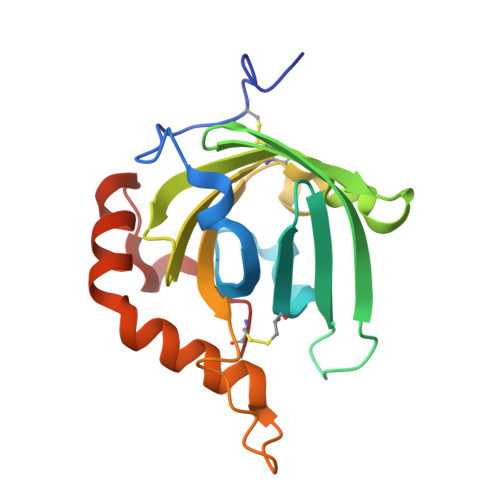The major cockroach allergen Bla g 4 binds tyramine and octopamine.
Offermann, L.R., Chan, S.L., Osinski, T., Tan, Y.W., Chew, F.T., Sivaraman, J., Mok, Y.K., Minor, W., Chruszcz, M.(2014) Mol Immunol 60: 86-94
- PubMed: 24769496
- DOI: https://doi.org/10.1016/j.molimm.2014.03.016
- Primary Citation of Related Structures:
4N7C, 4N7D - PubMed Abstract:
Bla g 4 is a male cockroach specific protein and is one of the major allergens produced by Blattella germanica (German cockroach). This protein belongs to the lipocalin family that comprises a set of proteins that characteristically bind small hydrophobic molecules and play a role in a number of processes such as: retinoid and pheromone transport, prostaglandin synthesis and mammalian immune response. Using NMR and isothermal titration calorimetry we demonstrated that Bla g 4 binds tyramine and octopamine in solution. In addition, crystal structure analysis of the complex revealed details of tyramine binding. As tyramine and octopamine play important roles in invertebrates, and are counterparts to vertebrate adrenergic transmitters, we speculate that these molecules are physiological ligands for Bla g 4. The nature of binding these ligands to Bla g 4 sheds light on the possible biological function of the protein. In addition, we performed a large-scale analysis of Bla g 4 and Per a 4 (an allergen from American cockroach) homologs to get insights into the function of these proteins. This analysis together with a structural comparison of Blag 4 and Per a 4 suggests that these proteins may play different roles and most likely bind different ligands. Accession numbers: The atomic coordinates and the structure factors have been deposited to the Protein Data Band under accession codes: 4N7C for native Bla g 4 and 4N7D for the Se-Met Bla g 4 structure.
- Department of Chemistry and Biochemistry, University of South Carolina, Columbia, SC 29208, USA.
Organizational Affiliation:



















